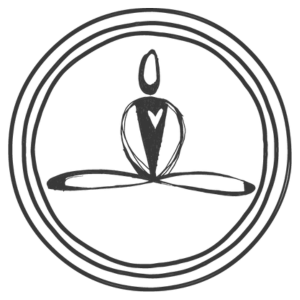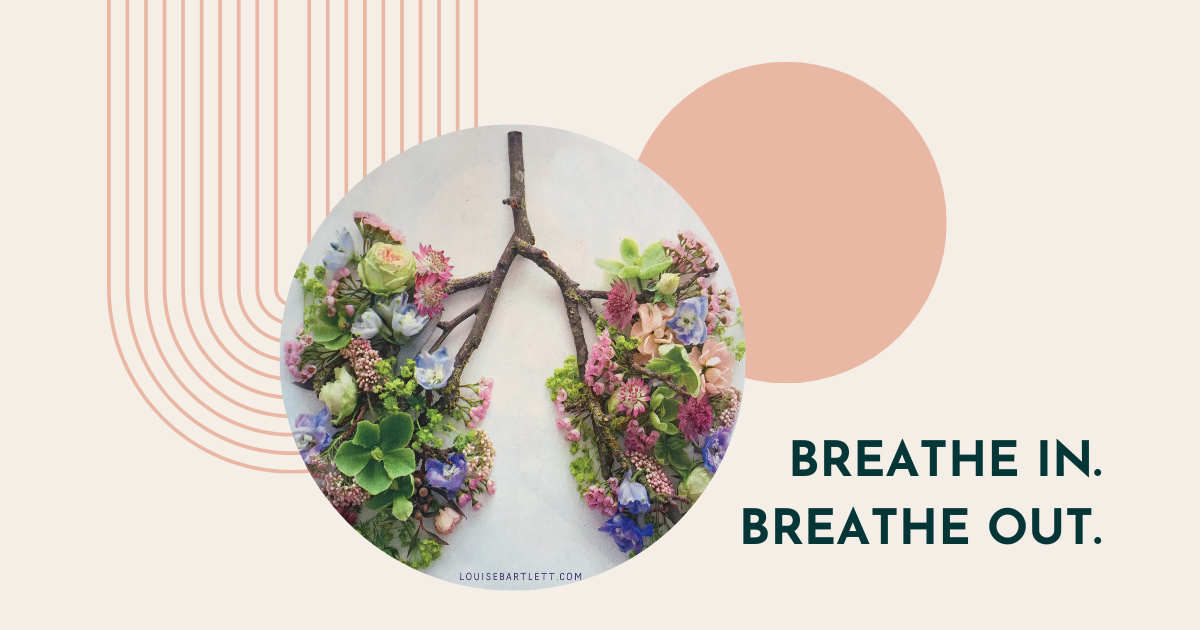A Beginner's Guide to the Benefits of Breath Work
Learn how to harness the power of your breath to reduce stress, improve focus, boost immunity & enhance overall health.
This resource will equip you with the tools and knowledge to take control of your breath and unlock its full potential.
Breathing is something we all know how to do. And yet, the majority of adults (and teenagers) forget about their natural ability to breathe fully.
When we are young, we’re taught to control our feelings and emotions, and as a result our muscles tighten and our breathing patterns become restricted. This has a huge impact on our mental and physical wellbeing! But, a study by Stanford University has found that just 5 Minutes Of Daily Breathwork Is Enough To Ease Stress, reduce anxiety and improve mood.
Pranayama - the Life Force
Pranayama is the breath. The word itself is made up of two words: prana, which refers to the breath and means “life force,” and yama, which means “control.” The combination of the two words means breathing exercises. When we learn to breath more deeply, we become more aware and conscious of our breath. And, conscious breath is one of the most powerful transformative tools available to us.
Making breathing practices a part of our daily life will initiate deep, profound and meaningful transformation. When we are not breathing fully, we are not living fully!
Some benefits to conscious breathing include:
Stronger lungs with vastly increased capacity
A healthier heart and stronger diaphragm
In many cases, the ability to heal asthma and also release the habit of smoking
The nervous system is calmed, diminishing stress, lowering one’s blood pressure and heart rate, and thereby improving sleep and maintaining a more-enhanced mental state while awake
Enables us to identify and heal emotional wounds from our past
Cultivates better relationships with others (1)
Breathe in. Breathe out. Breathe easy.
These simple and accessible breath-based techniques enable deep transformation and meaning for everyone; all ages, abilities, and walks of life. Give them a try and see which one resonates with you. As with everything else we practise, be consistent.
Spend 5 minutes each day and increase the time from there. Once you start to see results, you might be encouraged to lengthen your practise. As with any exercise, if you find anything too difficult, then stop. Listen to your body and where you are today and be easy on yourself.
Ocean Breath
Ocean breath or Ujjayi Breathing is intentionally deepened and slowed down. "Ujjayi" comes from the Sanskrit word meaning "victorious" or "triumphant". This practise produces an audible sound similar to the sound of the ocean or waves, which is why it is sometimes called "Ocean Breath".
The purpose of Ujjayi Breathing is to create heat in the body and to calm the mind. It is used in yoga as a way to synchronize movement with breath, as well as to maintain a steady and focused internal state during the practice.
Benefits: Calms the mind, improves concentration, relieves tension and stress.
Instructions:
Sit with your back straight and take a deep breath in through your nose.
As you exhale, constrict your throat slightly so that your exhale makes a soft "ha" sound, like you are fogging up a mirror.
Continue this deep, rhythmic breathing for several minutes, focusing on the sound and sensation of your breath.
Box Breath
Box breath, also known as square breath, is a technique used to regulate the breath and calm the mind. Box breathing has been used by athletes, military personnel and yogis to improve focus, reduce anxiety and enhance overall performance. By controlling the breath, box breathing can help regulate the body's autonomic nervous system, which is responsible for the fight or flight response. This can help to reduce stress and anxiety and increase the feelings of calm and relaxation.
Benefits: Reduces anxiety and stress, increases mental clarity and focus.
Instructions:
Sit or lie down in a comfortable position.
Inhale deeply through your nose for four counts.
Hold your breath for four counts.
Exhale slowly through your mouth for four counts.
Hold your breath for four counts.
Repeat for several minutes, focusing on the even rhythm of your breath
Belly Breathing
Belly breathing, also known as diaphragmatic breathing, is a practise used to maximize the use of the diaphragm muscle to breathe deeply and fully. It involves breathing in through the nose, allowing the abdomen to expand fully as the diaphragm moves downward, and breathing out through the mouth, allowing the abdomen to contract as the diaphragm moves upward.
Benefits: Activates the diaphragm, improves lung function, promotes relaxation, reduces anxiety and stress, improves digestion and circulation and improves sleep.
Instructions:
Sit or lie down in a comfortable position.
Place one hand on your belly and the other on your chest.
Inhale slowly through your nose, allowing your belly to expand and your diaphragm to descend.
Exhale slowly through your mouth, allowing your belly to contract and your diaphragm to rise.
Repeat for 5-10 minutes, focusing on the sensation of your breath moving in and out of your belly.
Kapalabhati Breath
Kapalabhati is a breathing practise that involves rapid, forceful exhales and passive inhales. It is also known as "skull shining breath" because of the sense of clarity and brightness it can bring to the mind.
The technique involves breathing in through the nose and exhaling forcefully through the nose, using the abdominal muscles to contract the diaphragm and push the air out in short, sharp bursts. The inhale is passive and the emphasis is on the exhale.
Benefits: Increases energy and vitality, improves digestion, aids in detoxification and clears the mind.
Instructions:
Sit with your back straight and take a deep breath in.
Exhale forcefully through your nose, drawing your belly in towards your spine.
As you exhale, your inhale should happen automatically.
Repeat this rapid, forceful exhale-inhale cycle for several minutes, focusing on the sensation of your breath.
4-7-8 Breath
The 4-7-8 breathing practise helps to regulate the body's autonomic nervous system, reducing stress and promoting relaxation. The practise involves breathing in for a count of four, holding the breath for a count of seven, and exhaling slowly for a count of eight. This breath practise can be a helpful tool for relaxation and stress reduction.
Benefits: Reduces anxiety and stress, promotes relaxation and sleep.
Instructions:
Sit or lie down in a comfortable position.
Inhale deeply through your nose for four counts.
Hold your breath for seven counts.
Exhale slowly through your mouth for eight counts.
Repeat for several minutes, focusing on the rhythm of your breath and the sensation of relaxation in your body.
Alternate nostril breathing
Alternate nostril breathing or Nadi Shodhana Pranayama is a balancing breath work practise that helps to regulate the nervous system. "Nadi" refers to the subtle energy channels in the body and "Shodhana" means purification or cleansing. So, Nadi Shodhana Pranayama is a breathing practise to purify the energy channels in the body by balancing the flow of prana (life force energy) through the left and right nostrils.
Benefits: Balances the nervous system, improves concentration and focus, reduces anxiety and stress, supports respiratory health.
Instructions:
Sit in a comfortable position with your spine straight.
Take your right hand and block your right nostril with your thumb.
Inhale slowly through your left nostril, then use your ring finger to block your left nostril and exhale through your right nostril.
Inhale through your right nostril, then block it with your thumb and exhale through your left nostril.
Repeat for 5-10 minutes, alternating nostrils with each breath and focusing on the sensation of air moving in and out of your nostrils.
In conclusion
Practicing breath work exercises has numerous benefits for overall relaxation and stress reduction. It can help you manage anxiety, lower blood pressure, and improve sleep quality, among other things. I encourage you to try one or more of these practises and see how you feel. If you're interested in learning more about the power of breathing, sign up for my Breathe to Heal on demand workshop and experience the transformative effects of these techniques for yourself.
“I just wanted to send you a thank you for your Breathe to Heal workshop. I have had an anxious October - a trigger month for me, so your class could not have come at a better time. I left feeling energised and my brain fog had cleared. Having suffered with anxiety and panic attacks (and periods of depression) since I was a child, I wish I had know about breath work much sooner.”
Resources
(1) A Life Worth Breathing, Max Strom, pg 102, Skyhorse Publishing
Cautions
If you are new to yoga and breath work and you are not sure if you can do the practises mentioned in this post, please seek the help of a trusted physician or health care provider. Listen to your body and if the breath work is too much for you, then please stop.







